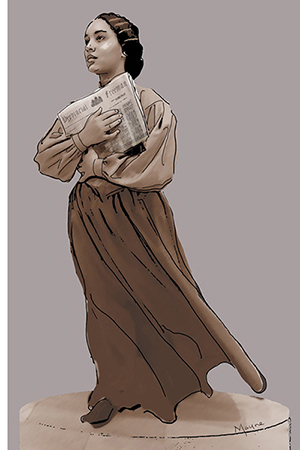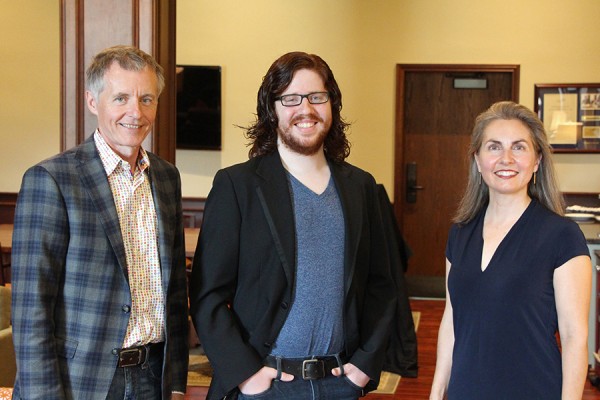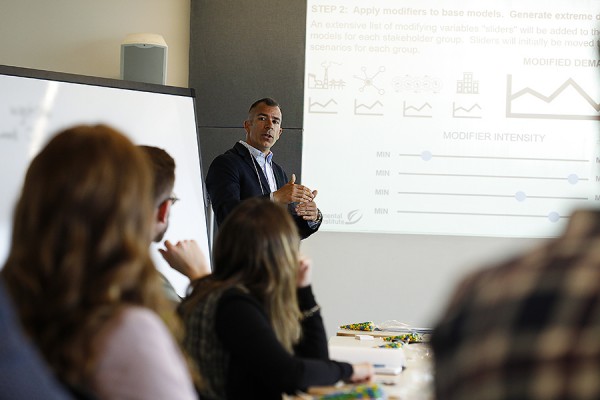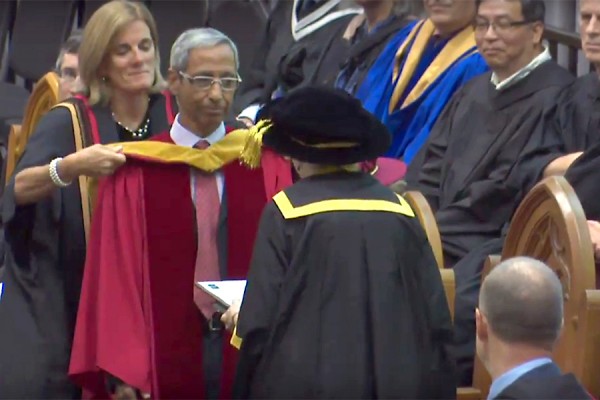 Windsor Hall has been chosen by the University of Windsor as the official name of the downtown building that houses the School of Social Work and Centre for Executive and Professional Education.
Windsor Hall has been chosen by the University of Windsor as the official name of the downtown building that houses the School of Social Work and Centre for Executive and Professional Education.
The official name of the downtown building that houses the School of Social Work and Centre for Executive and Professional Education — Windsor Hall —recognizes the longstanding significance of the site at Pitt and Ferry streets to the city as well as the University’s commitment to the downtown, says UWindsor President Alan Wildeman.
“The name Windsor Hall has a resonance with the name of the former Windsor Star building, and it is a name that is consistent with the naming of other buildings at the University of Windsor,” said Dr. Wildeman. “It is also nice to resurrect the name that was lost when what is now Chrysler Hall was renamed.”
Windsor Hall retains the original facades of the former Windsor Star newspaper building which opened on June 17, 1927. Earlier this year, the University of Windsor received a heritage designation plaque from the City of Windsor for preserving the Pitt-Ferry site.
Sculpture honouring pioneering publisher to grace site
 As the final step in completing the grounds and landscaping at Windsor Hall, the University has commissioned local artist Donna Mayne to create a sculpture that will honour Mary Ann Shadd, an African-Canadian/American, anti-slavery activist, journalist, publisher, teacher, and lawyer. (See Mayne’s conceptual sketch at right.)
As the final step in completing the grounds and landscaping at Windsor Hall, the University has commissioned local artist Donna Mayne to create a sculpture that will honour Mary Ann Shadd, an African-Canadian/American, anti-slavery activist, journalist, publisher, teacher, and lawyer. (See Mayne’s conceptual sketch at right.)
Shadd was the first Black woman to publish and edit a newspaper — the Provincial Freeman — in North America and the first woman publisher in Canada. The Provincial Freeman was published from March 1853 to September 1857 in Windsor, then in Toronto and after that in Chatham. The newspaper advocated equality, integration, and self-reliance for Black people in Canada and the United States.
“Mary Ann Shadd was a remarkable woman,” Wildeman said. “During her life she was a role model for many and a powerful advocate to end enslavement. This sculpture will remind us of her legacy both locally and internationally.”
Shadd was born in Wilmington, Delaware, in 1823, the eldest of 13 children. The Canadian Encyclopedia says that Shadd followed in the footsteps of her activist parents, who were part of the Underground Railroad and pursued the path taken by those heading north to freedom in Canada.
Settling in Windsor, she wrote educational booklets outlining the advantages of Canada. She also set up an integrated school in Windsor.
Shadd’s father, Abraham Doras Shadd, settled in North Buxton, near Chatham, in the late 1850s and became the first Black man elected to political office in Canada when he was voted to the position of Raleigh Township counselor. A.D. Shadd Road in Chatham-Kent still bears his name today.
Prior to returning to the U.S., Mary Ann Shadd obtained Canadian citizenship. In Washington, D.C., she taught, then pursued law studies and became the first Black woman to complete this degree at Howard University. She joined efforts to gain women’s suffrage and was herself the first Black woman to vote in a national election. Earlier this month, Shadd was profiled in a New York Times article, “Overlooked No More: How One Woman Shook Up the Abolitionist Movement.”
Shadd died in Washington in 1893; the Canadian government designated her a Person of National Historic Significance in 1994.








